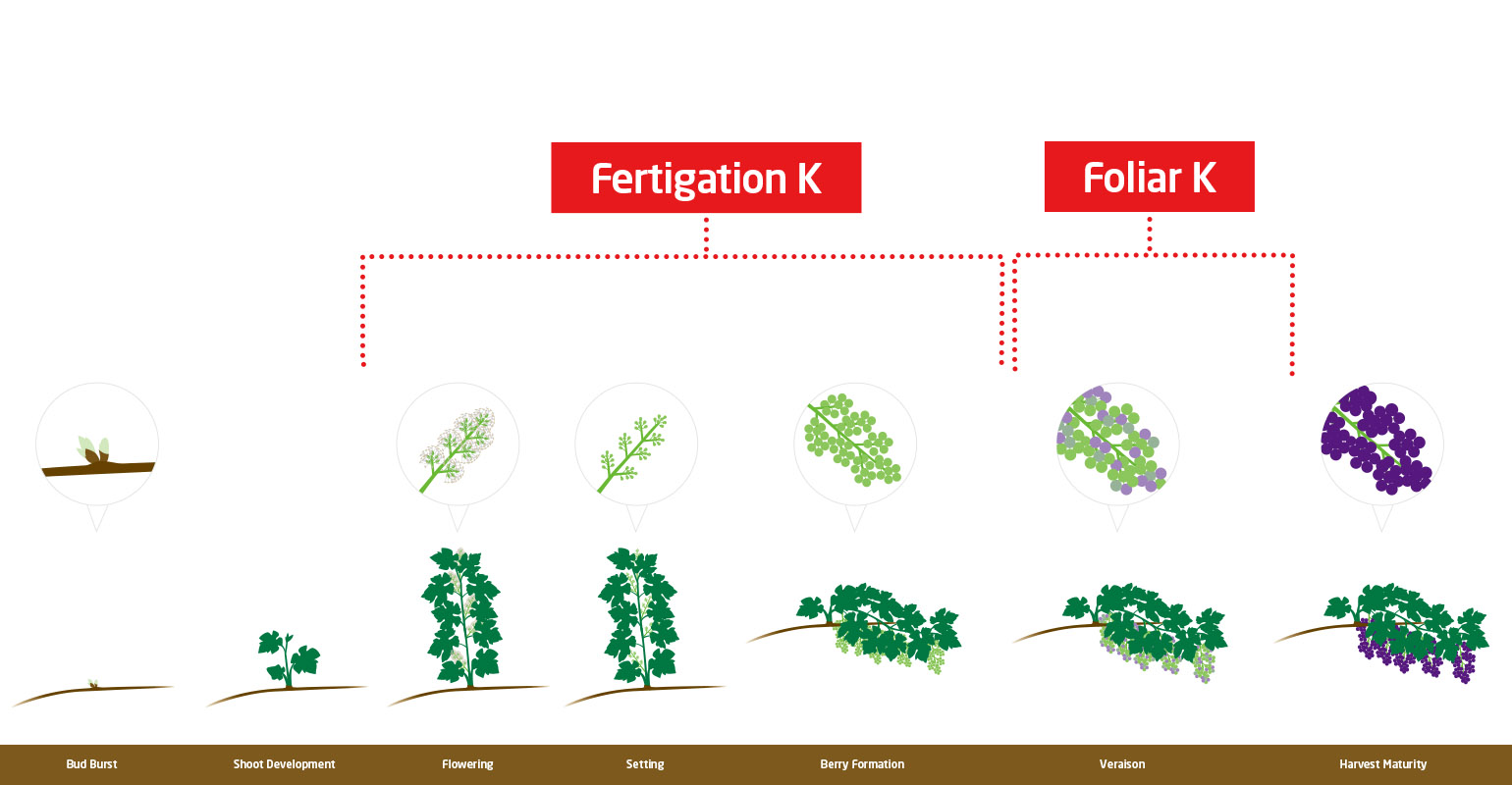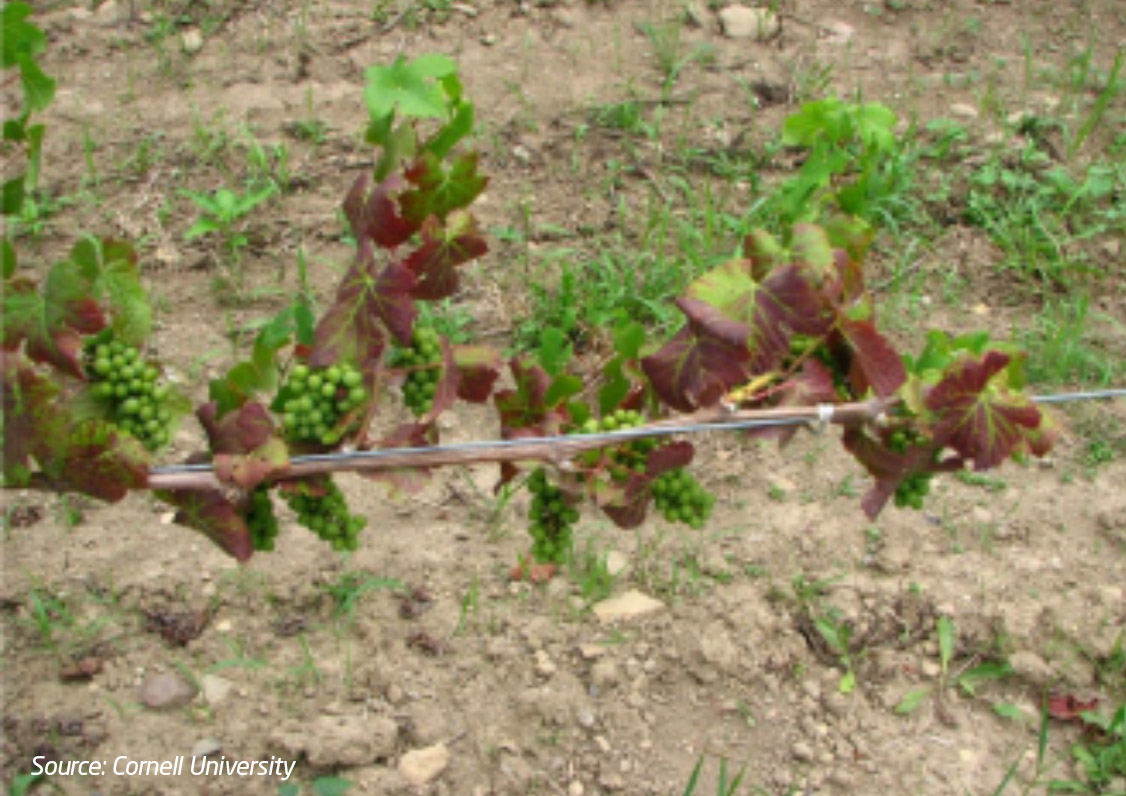Potassium Applications in Grapevines
July 02, 2021
Agronomics
Potassium is one of the most significant mineral nutrients in grapevine production to achieve good yields and maintain adequate quality. On average, approximately 5 lb of K2O are removed per ton of grapes harvested, which is the highest of any mineral element. In all plant species potassium is necessary for a variety of essential tasks including protein and starch synthesis, enzyme activation, and photosynthesis. Its role in regulating the opening and closing of stomata make potassium level an important factor in mitigating abiotic stresses. High K levels have also been shown to suppress disease development in many plant species.
High potassium levels in grape bunches are usually correlated to increased berry weight and brix at harvest. This is due to the critical role K plays in cell expansion and translocating sugars into the fruit. Excessive potassium at harvest can reduce titratable acidity (TA) and pH though, so balancing your K program based on brix/TA goals is important.
Conditions Leading to Potassium (K) Deficiencies
Potassium mobility in soils is intermediate between nitrogen and phosphorus but is not easily leached because it has a positive charge (K+), which causes it to be attracted to negatively charged soil colloids. Some soils with a high proportion of Vermiculite-type particles have very high potassium fixation making K availability very low in these soils. There are several grape growing areas like the Lodi region that have a high proportion of K-fixing soils.
Potassium availability in the soil is generally very good at neutral and alkaline pH levels. However as the pH drops below 6, K availability significantly decreases.
Potassium deficiency in grapevines causes a marginal chlorosis in mature leaves that can develop into burning along the leaf margin and may resemble salt toxicity. In red varieties, K deficiency will often appear as red discoloration resembling Leafroll Disease. Low potassium will also decrease yield and brix levels at harvest.
Desired Potassium Tissue Test Values
There are several different timings to sample for potassium in grapevines. At full bloom, 1.5% K in the petiole opposite the cluster is considered adequate. At Veraison, 1.2% K is adequate. Samples can also be pulled from the most recently mature petiole of actively growing shoots. In these samples, <0.5% K is considered deficient.
Key Application Timings and Rates
The period of highest uptake of potassium is from bloom to Veraison. Spoon feeding K fertilizers through fertigation during this time takes advantage of active root uptake. BRANDT® EnzUp® K DS is a low salt index, highly plant available formulation that is ideally suited drip fertigation during this period. After Veraison, soil uptake of potassium decreases, but a lot of K is moved through the phloem into the developing bunches. Foliar applications of potassium during this time can be beneficial to brix development and berry sizing, especially if the Veraison petiole samples showed low or marginal K levels. BRANDT® Manni-Plex® K and BRANDT Smart K B are both highly efficient and safe foliar fertilizer formulations work well at this timing.
Key Products:


Potassium deficiency in grapevine
